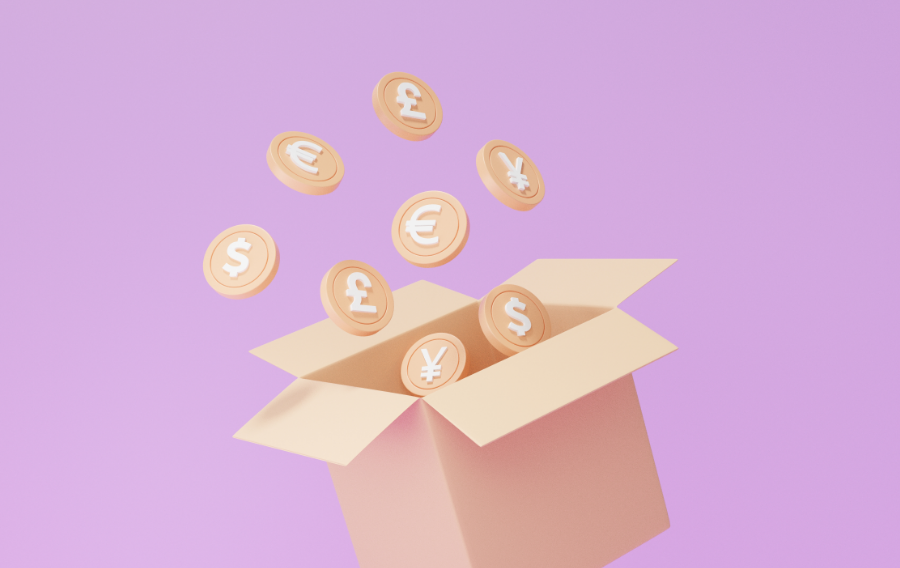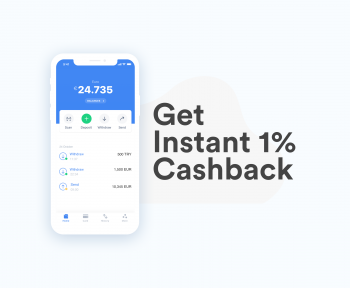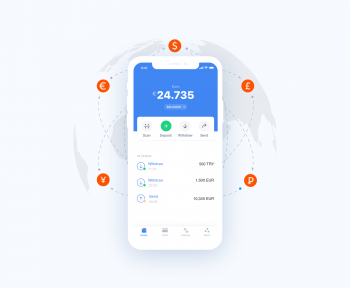Have you ever wondered how much your money is worth in another country’s currency? Whether you’re planning a vacation, shopping online from international stores, or just curious about the economy, knowing how to work out exchange rate is super useful in the world of payments.
Today, we’ll be walking you through what an exchange rate is, why it may change, and how to determine exchange rate and easily calculate it for yourself. Let’s break it down into simple steps so you can become an expert at understanding and calculating exchange rates.
What is an Exchange Rate?
Before we begin, it’s important to know what we’re dealing with. An exchange rate is basically the price of one country’s currency in terms of another’s. For example, how many euros you can get for your dollars.
This exchange rate changes all the time due to a bunch of factors like market demand, economic stability, and political events. So, if you’re planning to exchange money, it’s good to know this stuff because it affects how much you can buy with your cash overseas. So, how to work out exchange rate? Read on to find out.
Why Do Exchange Rates Change?
An exchange rate isn’t just random numbers. In fact, an exchange rate can be influenced by real-world events. Here are a few things that can make an exchange rate go up or down:
- Economic Health: Countries with strong, stable economies usually have stronger currencies. It’s like in sports/teams in good shape generally perform better.
- Interest Rates: If a country’s bank offers high interest rates, people might invest there to get more bang for their buck. This can make that country’s currency more desirable.
- Inflation: Low inflation usually keeps a currency stable, making it more attractive. High inflation can weaken a currency, as it erodes buying power.
- Political Stability: Countries with less drama and more stability tend to have stronger currencies. Investors like safe and predictable environments.
- Public Debt: Countries with lots of debt might struggle to attract investors, putting pressure on their currency.
A Step-by-Step Guide on How to Work Out Exchange Rates
1. Finding the Current Exchange Rate
Your first step is to find the current exchange rate for the currency pair you’re interested in (like USD to GBP, or in the common tongue, dollars to pounds). You can find this info on financial websites, at banks, or on currency conversion apps with ease.
2. Doing the Math: A Simple Conversion Tactic
- Direct Rate: Let’s say 1 British pound costs 1.38 US dollars today. If you have 100 dollars, you can convert it like this:
100 USD ÷ 1.38 = 72.46 GBP
So, you’ll get about 72.46 pounds for your 100 dollars.
- Indirect Rate: If you want to convert pounds back to dollars and the rate is 0.72, then:
100 GBP × 1.38 = 138 USD
Your 100 pounds turn into 138 dollars.
3. Examples of Converting Currency
Let’s take a look at two quick scenarios to see currency conversion in action:
- Scenario 1: From USD to EUR
Imagine you have 1,000 USD, and the current USD to EUR rate is 0.85. To find out how many euros you’ll get:
1,000 USD * 0.85 = 850 EUR
You’d have 850 euros after the exchange.
- Scenario 2: From EUR to USD
Now, if you need to change euros back to dollars and the rate is 1.18:
1,000 EUR × 1.18 = 1,180 USD
You’d get 1,180 dollars for your euros.
Not into Mathematics? Exchange Rate Money Converters Can Help
We know it can be mind-boggling. But don’t worry, if you’re not into doing the math yourself like many others around the world, there are plenty of exchange rate money converter, online calculator and mobile apps that can do it for you. Just type in the amount and select the currencies, and these exchange rate money converter websites and online tools will give you the current exchange rate and conversions instantly.
The Two Primary Exchange Rate Systems
1. Dynamic Exchange Rates
Many advanced economies adopt dynamic exchange rates, which are primarily driven by market forces of supply and demand. These rates naturally adjust to economic fluctuations, allowing a country’s currency value to rise or fall based on its current demand.
When demand drops, the currency value decreases, making imported goods costlier. This shift often drives consumers to opt for locally produced goods and services, thereby supporting domestic industries and helping stabilize the economy through internal adjustments.
2. Stabilised Exchange Rates
Countries like Panama, Qatar, and Saudi Arabia employ stabilised exchange rates, where the government sets and strictly controls the currency’s value relative to a major currency like the US dollar.
This control is executed through the central bank’s active participation in the foreign exchange market, buying or selling national currency to maintain the set rate. Stabilised rates are particularly beneficial for smaller or developing nations as they promote currency stability, encourage foreign investment, and prevent sudden economic shocks due to currency devaluation.
Tips for Getting the Best Exchange Rate
- Shop Around: Don’t just go to one place to exchange your money. Check different banks, online services, and local currency exchanges to find the best rate.
- Watch for Fees: Some places might offer a good exchange rate but then slap on high fees. Make sure to check the total cost.
- Time Your Exchange: Rates change throughout the day. If you’re not in a rush, watch the rates for a bit and choose a good time to exchange.
Mastering Currency Conversion with Ease
Understanding and calculating exchange rates can help you make smarter choices when dealing with different currencies. It’s not just about getting more bang for your buck but rather about being informed and ready for your financial interactions, whether you’re travelling, investing, or just exploring.
Every currency tells a story of its nation’s economy, culture, and global standing. By learning how to calculate and interpret exchange rates, you equip yourself with knowledge that transcends mere numbers.
Think of currency conversion not just as a financial necessity but as a gateway to becoming a global citizen. Whether you’re negotiating business deals, shopping on foreign websites, or exploring exotic locales, you’re engaging with the world in a more meaningful way.
So, keep this guide handy, approach currency exchanges with confidence, and make every transaction count. Your journey through the world’s markets and cultures starts with the simple act of understanding exchange rates. It’s 2024, and it’s about time to make each exchange a new way to learn, grow, and connect globally.



